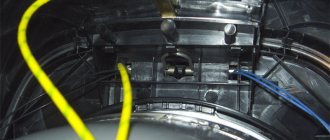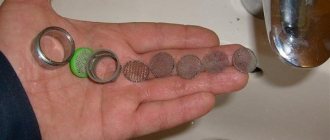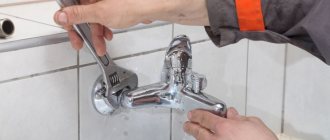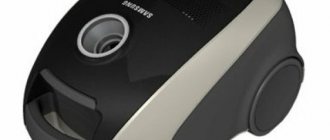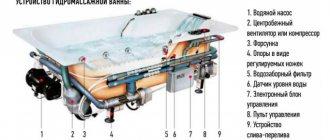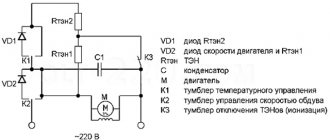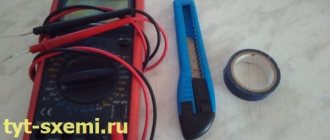A dishwasher is not as complicated a piece of equipment as it seems at first glance. Most breakdowns are caused by simple reasons. Eliminating them does not require high qualifications or special knowledge. If the equipment is no longer under warranty, you can try to repair it yourself. We will describe the main malfunctions of dishwashers and how to eliminate them further. In most cases, the causes and methods of elimination do not depend on the brand of the machine. Bosch, Siemens, Samsung, Electrolux, Miele, Indesit, Candy, Beko - it doesn’t matter. The repair is the same. The disassembly process, fastening, etc. may differ. But the basic principles of finding the causes and troubleshooting dishwashers are the same.
A dishwasher is every housewife's dream
How does a dishwasher work?
To repair a dishwasher, you need to understand the processes that occur in it. This is the only way to determine the possible causes of the breakdown and eliminate them as soon as possible.
Let us describe the general principle of operation of a dishwasher. The operating algorithm is usually the same for all manufacturers, although some changes may occur. Next, we will describe the most time-consuming process - washing dirty dishes with time to “acidify” the remaining food.
- After loading the dishes, the door closes. This is recorded by a special sensor. If the lock is not closed, the dishwasher will not start.
- The user selects the dishwasher operating mode and presses the “Start” button.
Rinse water is supplied from all sides
- The water intake valve opens and it is pumped into a special tank. Along the way, it is mixed with softening salts and detergent. The water level is controlled by appropriate sensors.
- The tank contains heating elements - heating elements. They heat the water to the required temperature (depending on the selected mode). The degree of heating is controlled by a temperature sensor. The process continues only if the sensor is triggered.
- Heated water is supplied by a circulation pump to nozzles located on the side surfaces and sprayed in small portions. This is the "soak" mode.
- The liquid draining from the dishes is collected in a tray, passes through filters, and is again supplied to the nozzles.
- At the end of the time allotted for this mode (controlled by the processor), the rinsing mode is activated.
- In this mode, water is supplied from the main sprinkler, which is located under the basket with dishes. Powerful jets of water directed in different directions wash away any remaining dirt.
- The process goes on cyclically - the water is filtered, more detergent is added to it, and it again ends up in the sprinkler. This is how the final removal of contaminants occurs. The number of cycles depends on the selected program.
Water is supplied from the nozzles under pressure
- After this mode ends (controlled by the processor), a command is given to drain the dirty water. The pump pumps it out of the reservoir.
- A small portion of water is pumped in to rinse the tank and removed again.
- Water is collected for rinsing. It is fed into a sprayer, which sprays it in different directions, washing the dishes from all sides. The rinsing process can be repeated several times.
- Waste water from the reservoir is pumped into the sewer system.
- Drying mode is activated. It all depends on the type of dishwasher. If there is a drying mode, heating elements are turned on to heat the air. Heated air is forced into the chamber using a fan. If there is no such mode, the dishwasher simply turns off - the dishes dry by convection.
As you can see, a large number of sensors are involved in the process. All of them can fail and cause a breakdown. Filters, nozzles, and sprinklers may also become clogged. All these are causes of failure.
What breaks most often?
A professional technician will point out the causes of the failure and help eliminate it. However, some problems are completely do-it-yourself, since they can be effectively solved at home. Using the instruction manual for a particular Bosch dishwasher model, it is quite possible to solve problems on your own when:
- no food;
- the unit has stopped removing water;
- the water is not heated;
- The device does not turn on.
It is quite possible to repair a Bosch dishwasher yourself if an error is constantly displayed on the equipment display. It is easy to solve the problem of the inability to collect water. Another common malfunction is the inability to open or close the appliance door.
Bosch dishwasher repair
The main reasons why dishwashers fail
In addition to natural wear and tear, there are several other factors that provoke malfunctions in dishwashing machines. These include:
- incorrect installation of the PMM after its purchase;
- violation of the rules for operating this household appliance;
- the water in the tap is too hard;
- instability of the electrical network (surges in supply voltage);
- using low-quality household chemicals to soften water and wash dishes.
It’s paradoxical, but true: most dishwasher malfunctions occur precisely for the reasons listed above. For example, it is important to comply with the restrictions on the length of communications when installing a dishwasher and to set it clearly at level. All legs must be adjusted to the unevenness of the floor so that during operation there are no vibrations that negatively affect the equipment.
Unfortunately, regenerating salt cannot completely soften hard water. Over time, limescale forms not only on the walls of the chamber, but also in the units and parts of the PMM. If you do not periodically get rid of such contaminants, the unit will quickly fail.
Power surges also pose a great threat. Because of them, the control electronics fail. Blockages in the drain and sewer system are also common causes of operational failures.
In order for your household unit to serve for a long time and without failure, strictly follow the instructions supplied with it. If you understand that you cannot connect the dishwasher correctly yourself, it is better to invite professionals to avoid problems in the future.
The video will be useful for those who do not know how to connect a dishwasher:
Basic malfunctions and their elimination
Next, we list the most common defects and tell you how you can eliminate them by doing the repairs yourself. Many of them are associated with external factors, for example, low water pressure in pipes or insufficient voltage in the electrical network. Many malfunctions are associated with blockages in the drainage or drainage system of the PMM. This kind of problem is quite easy to fix on your own.
Dishwasher won't turn on
If such an event occurs, the first thing that comes to mind is that there is no supply voltage . This can happen for various reasons:
- the power cord is not plugged into the outlet or is damaged;
- no contact in the 220 V socket;
- the PMM input network filter has failed;
- The electronic control unit (hereinafter also referred to as ECU) is damaged.
In order to perform diagnostics and check the presence of supply voltage, the user will need a multimeter (hereinafter also referred to as a tester). This device is universal and can be used in the household for various equipment problems.
The tester will allow you to determine whether there is voltage in the socket, and also check the wiring inside the PMM housing for a break. The surge protector may burn out due to excess voltage in the electrical network. A sign of damage is the presence of burnt elements.
In addition to the filter, a starting capacitor installed on the drain pump can prevent the dishwasher from turning on. The serviceability of the capacitor can also be checked with a multimeter by measuring its resistance. Damaged parts must be replaced with strictly similar ones: you should not experiment with the capacitance and permissible voltage of capacitors.
Damage to the ECU is less likely; such a breakdown is complex and requires qualified intervention. In addition to the above reasons, the source of the problem may be the lack of water in the water supply and the door not being closed until it clicks - in these cases, the operating program does not start.
Video
How to repair a dishwasher if water does not flow into it due to a faulty water level sensor:
Removing blockages and unblocking the drain pump in the Bosch PMM:
Electronic engineer with many years of experience. For several years he was involved in organizing the repair of household appliances, including washing machines. Loves sport fishing, water tourism and travel.
Found a mistake? Select it and click the buttons:
Washing machines have something to do with the origin of the expression “money laundering.” In the 1930s, American gangsters used a network of laundries as a cover for their illegal activities. By passing off the proceeds of crime as proceeds from cleaning clothes, they turned “dirty” money into “clean” money.
The expression “soap opera” (“soap”) did not arise by chance. The very first series and shows that had a female audience were broadcast on television at a time when housewives did cleaning, ironing and laundry. In addition, to attract female viewers to the screens, commercials for detergents: soaps and powders were often played on air.
Troubleshooting tips
For any type of breakdown, it is important to carry out the most accurate diagnosis. Often, the participation of a master is not necessary. Using the dishwasher operating instructions, you can carry out this procedure yourself. For example, if the equipment cannot be turned on, the Bosch dishwasher repair instructions suggest first checking the voltage level in the network.
A guide to troubleshooting other device malfunctions from the manufacturer Bosch suggests:
- visual inspection of the device;
- identifying the presence of deformation of the power cord;
- checking the correct connection of the water drain and its supply hose.
Sometimes repairing a Bosch dishwasher at home on your own is impossible without partially disassembling the equipment. For example, the SRV55TO3EU model requires mandatory testing of the functioning of internal components, including valve sensors and pumps.
Management - Assistant No. 1
Don't complicate your life. Urgent self-repair of a Bosch dishwasher will be more productive if you take into account the indicators of self-diagnosis of faults. This system is built-in, and all devices from this popular manufacturer are equipped with it. If a specific fault is detected, the display will show a message indicating a particular error code. Using the instructions for the device, it is easy to identify the problem. After identifying a malfunction in the functioning of the device, you can proceed to its elimination.
It is recommended to perform the correct repair of a Bosch dishwasher using the video on your own if the breakdown is simple:
- removing foreign objects from the pump;
- cleaning the filter;
- valve cleaning;
- removing clogged spray arms.
This approach does not require specific knowledge or skills. Highly functional dishwashers from the Bosch brand of any model, including the common version SRV55TO3EU, are easy to clean. The drainage system often gets clogged on them. If this malfunction occurs, you need to inspect the drain hose, as there may be kinks on it. It is also worth checking the filter, which may be clogged with food debris, and checking the siphon installed under the sink for blockages.
